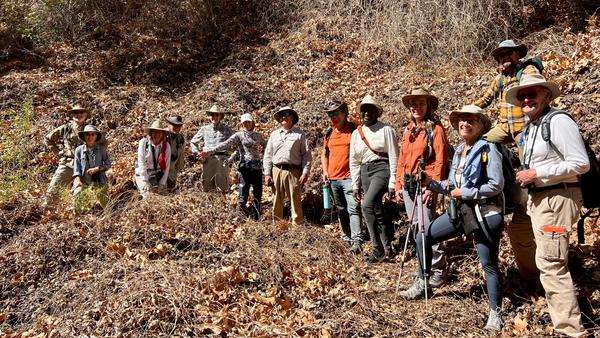A Truth to Unveil
“Therefore, one must have an aim, and this aim should be a study to complete, a truth to unveil.” — Charles Darwin
Before Darwin, much of natural history was aimed at cataloging species. How many species of beetles occurred here or there, how many species of plants, birds, butterflies, or lizards? Cataloging species is still an important task for natural historians; knowing how many species there are and where they live is an essential baseline for asking the next questions. What drives the diversity of species, what drives the loss of species, and why are certain species and certain areas more, or less, resilient to environmental change? These “next level” questions are the natural history paradigm shift that Darwin catalyzed, the pursuit of “truths to unveil.”
Following the publication of “The Origin,” Darwin published a handful of books that addressed seemingly arcane topics ranging from orchid pollination to carnivorous plants, to climbing ivy, to earthworms. At first blush these topics pale in comparison to the big question addressed in the Origin, but they were in fact each an argument in support of the Origin. The plant books each focused on how incremental mutations and adaptations changed existing leaf and flower structures to new uses, allowing those plants to exploit new niches and evolve into new species. The earthworm book was Darwin’s last before he died at the age of 73. Here his objective was to show how with enough time, seemingly small insignificant changes like the actions of individual earthworms in the soil, result in dramatic changes in soil nutrients and the churning of the soil surface. Like many of his experiments, he engaged his children in every step, measuring how rocks placed at the surface disappeared beneath the soil over time. Darwin hoped his readers would see the metaphor that the worms represent, that small seemingly insignificant mutations, over time, could result in the origin of new species.
Today, a “truth to unveil” regarding the biodiversity around us – including us – is how species will respond to climate change. Ideally, step one is to have in hand data that document where species were found prior to the onset of modern climate change (around the 1970s). Unfortunately, such data sets are exceedingly rare; the heyday of natural history was already in the history of science’s rear-view mirror, and scientists were increasingly turning toward the development of theory and mathematical models to explain broad patterns in nature. Nevertheless, there are truths to unveil even when limited to just current data; the approach is often referred to as a “space for time” substitution. In essence, by cataloging species occurrences and abundance along climate gradients (space), we can infer how those occurrences and abundances have changed due to, in the case of deserts, increased heat and aridity since the 1970s (time).
Here in the deserts in and surrounding the Coachella Valley there are two heat and aridity gradients. One is elevation. As you increase in elevation from as low as or even lower than mean sea level in the Salton Trough to elevations from up over 10,700’ (San Jacinto Peak) to over 11,500’ (San Gorgonio Peak) it gets incrementally cooler and less arid. In terms of a latitudinal change, it is like moving from the Salton Sea to Canada or Alaska near the arctic circle. The other gradient is east to west — from Thermal and Indio where average rainfall is a mere 3” to Snow Creek where average rainfall is more than four times that amount (13”) to Cabazon where it is more than five times that amount (15.7”). During the successive glacial maxima and minima of the Pleistocene, animal and plant ranges were in a slow-moving flux along those two gradients, always tracking their climatic preferences. In the face of modern climate change, to the extent that they can keep pace with the current rate of both warming and increased aridity, species’ distributions are again on the move. The question is, given the rapid rate of climatic change, which species will be able to track their preferred climate, and which ones will not and will perish?
Climate models can tell us where each species need to shift, but those models are less able to identify if those species have the capacity to get there fast enough. Here then is a critical role for naturalists, conducting surveys along these two climate gradients and carefully cataloging species’ occurrences and abundance. Following in Charles Darwin’s footsteps, with “an aim, and this aim should be a study to complete, a truth to unveil.”
Nullius in verba
Go outside, tip your hat to a chuckwalla (and a cactus), think like a mountain, and be safe

